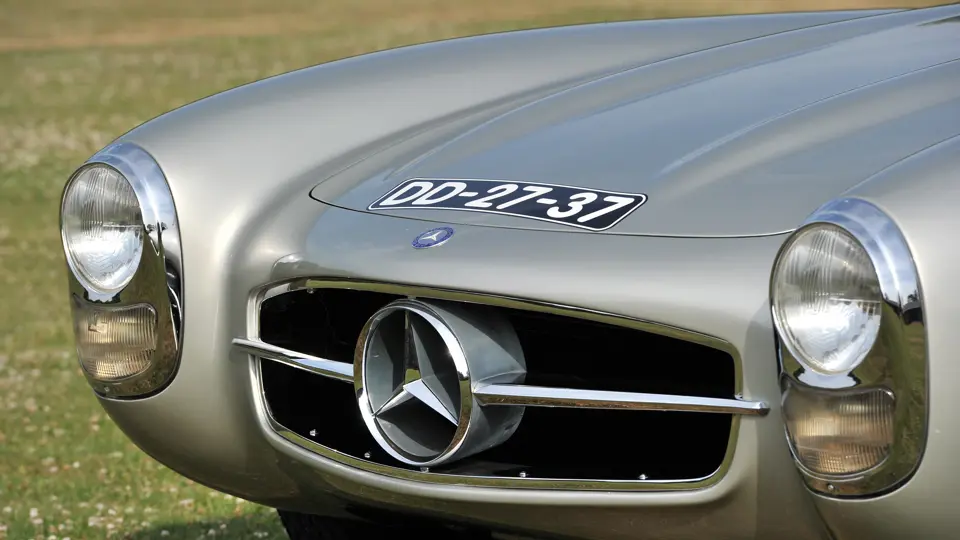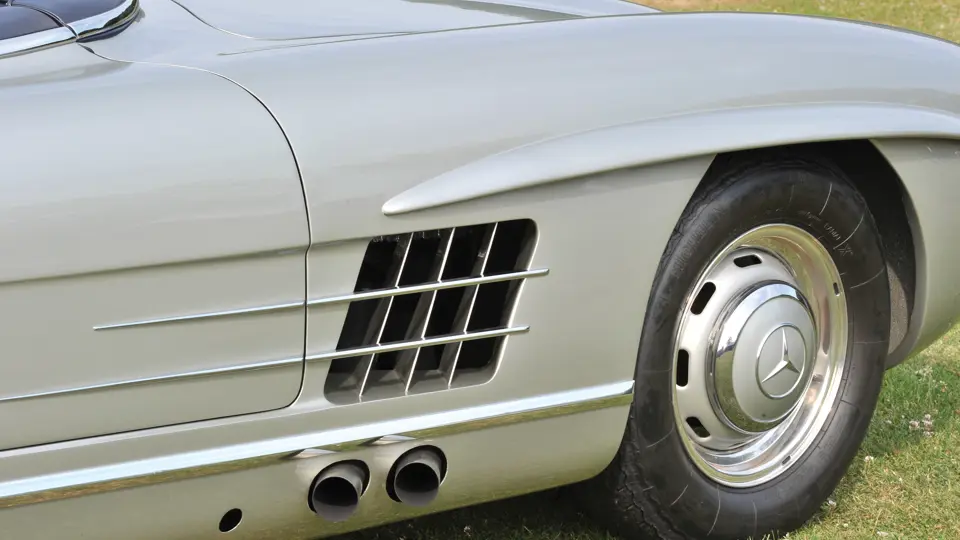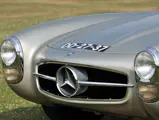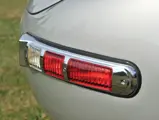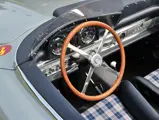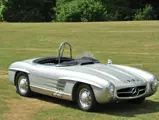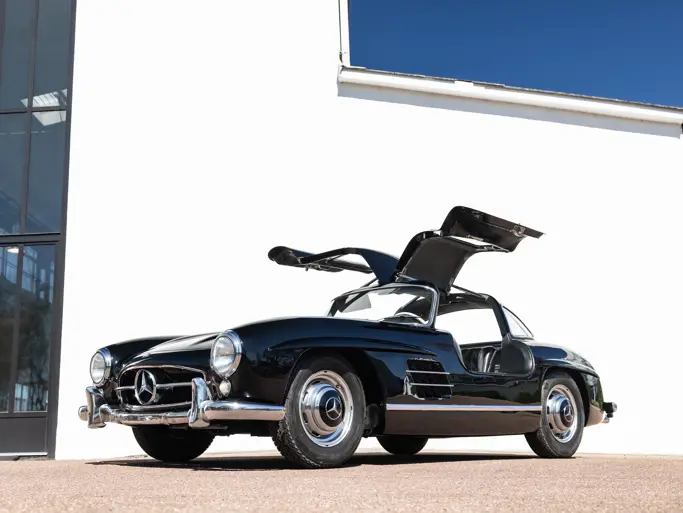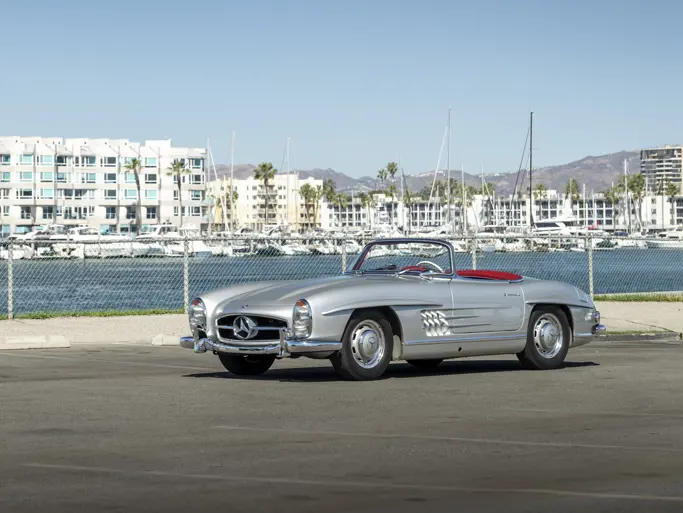250 bhp, 2,996 cc overhead-cam inline six-cylinder engine, aluminium block four-speed manual transmission, independent front suspension with upper and lower A-arms and coil springs, independent rear suspension with swing axles and coil springs, and front disc and rear drum hydraulic brakes. Wheelbase: 2,400 mm
Whilst the Mercedes-Benz 300 SL is often thought of as the ultimate road car of the 1950s, it is important to remember that it was, in fact, a car born and bred directly on the race track. It was Mercedes-Benz’s New York importer, Max Hoffman, who conceived the idea for a road version of the potent W194 300 SL, which would cater towards wealthy, performance-minded enthusiasts. Hoffman successfully convinced the top executives at Mercedes-Benz that a car such as this would sell well in the United States, and the rest is history. As radical and ground breaking as the 300 SL and the Roadster that followed were, the 300 SLS that was campaigned by American racing driver Paul O’Shea took things one step further.
According to Sports Illustrated magazine in July 1955, O’Shea “[had] always tinkered with cars and built the first one he ever drove by compounding a makeshift motor out of an old washing machine”, and he began racing in 1950. It was clear that O’Shea was a natural, as he chalked up his first victory, in a one-hour endurance race at Vero Beach, Florida, in 1951. He would go on to enter in the 12-hour race that same day, where he emerged with a 2nd place finish.
Fast forward to 1955, and Mercedes-Benz had removed itself from all motorsport activities following the horrific crash at Le Mans that year, leaving only a handful of private enthusiasts racing automobiles adorned with the three-pointed star. At the time, Paul O’Shea had already been racing 300 SLs and was doing well under the banner of the O’Shea-Tilp Racing Team. In 1957, O’Shea decided to convert a pair of brand-new 1957 300 SL Roadsters into all-out race cars that could compete in the SCCA’s D Production class. O’Shea saw massive success in that first year with the new cars, and he would go on to win the class title in 1957, demonstrating once again the supreme engineering of the 300 SL platform and the effectiveness of O’Shea’s new 300 SLS. With its successful résumé and the fame its driver accrued behind the wheel, the 300 SLS and Paul O’Shea had written themselves into the SCCA history books, and they would never be forgotten by those who witnessed his exploits. O’Shea would go on to race until 1962, and he would eventually brush shoulders as a co-driver to automotive greats such as Phil Hill and Zora Arkus Duntov.
To create an accurate recreation of the 300 SLS that O’Shea drove to victory so many times would not be an easy task. Just like O’Shea’s SLS, a 1957 300 SL Roadster was sourced to function as the basis for the project, and then the work began.
The Mercedes-Benz specialists at Kienle Automobiltechnik, in Heimerdingen, Germany, were commissioned to do the conversion, and they spent no less than 2,000 man hours on the job. Engineers carefully shed nearly 250 kilograms from the weight of the original roadster by installing a plethora of custom-built aluminium parts, including an engine block, a radiator, a 120-litre fuel tank, an oil cooler, and lightweight seats, and removing the bumpers, windows, and heater altogether. A small racing windscreen was installed as well, saving even more weight and giving the SLS an even racier look whilst also helping to improve aerodynamics. Finally, a single chrome roll bar was installed behind the driver’s seat. Overall power output was increased by 35 horsepower, giving the car even more incredible performance credentials.
The SLS is in absolutely beautiful condition, sporting silver paint over a dark blue leather interior with matching blue-grey plaid seat inserts. Whilst it is purpose-built for racing, the interior is truly a nice place to be. The beautiful blue dashboard will be familiar to anyone who has spent time in an “ordinary” example of a 300 SL Roadster, and the interior is beautifully trimmed. The gorgeous wood-rimmed steering wheel is inspired by the wheel from the 300 SLR, and it gives the interior a much racier feeling. Few signs of use are apparent, but this car still presents as being fresh from a restoration. A recent mechanical inspection found the drivetrain and its components to be in exemplary condition, with only minor signs of wear. This 300 SLS is, without a doubt, ready to return to the track and the open road.
The SLS offered here today presents a unique opportunity. As a lightened and more powerful version of the most iconic Mercedes-Benz vehicle of all time, this automobile will not only provide for endless fun on the track, but it will also be equally ready to tear up country roads and turn heads whilst doing so. This car is perfect for the racing enthusiast who isn’t afraid of taking an automobile such as this out onto the track to find its limits, just as Paul O’Shea did over 50 years ago.


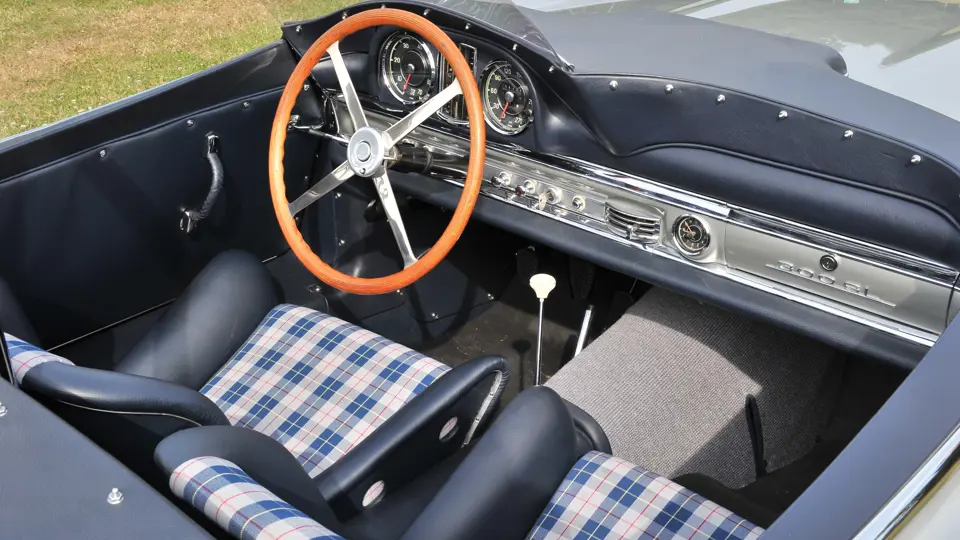




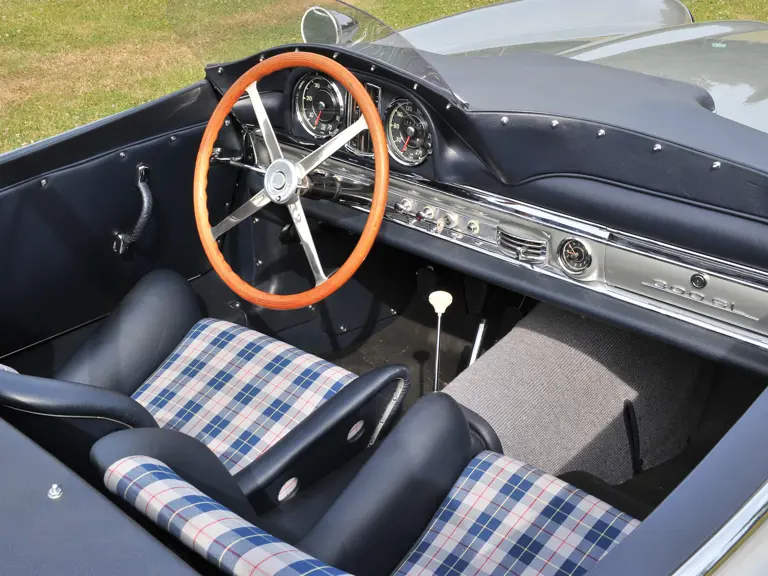
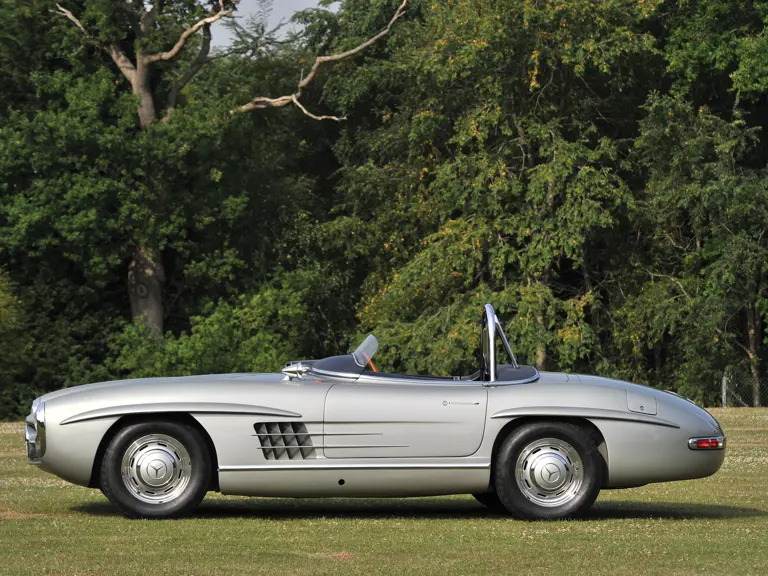


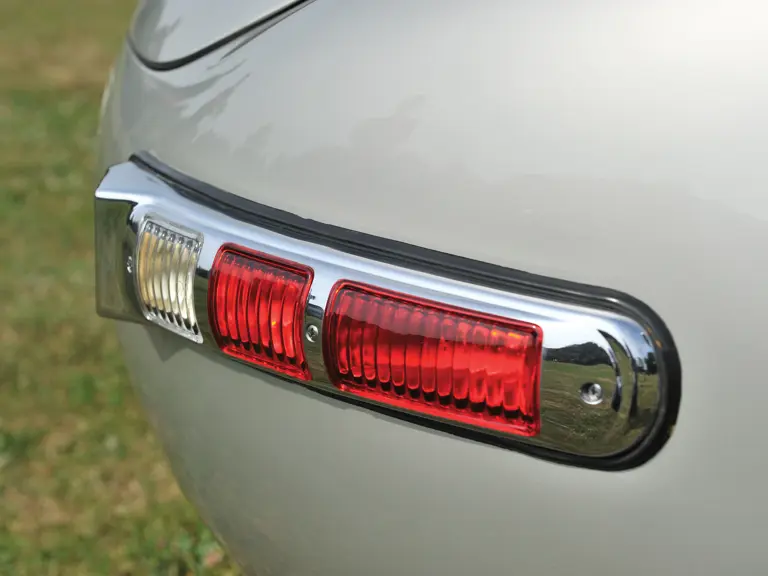
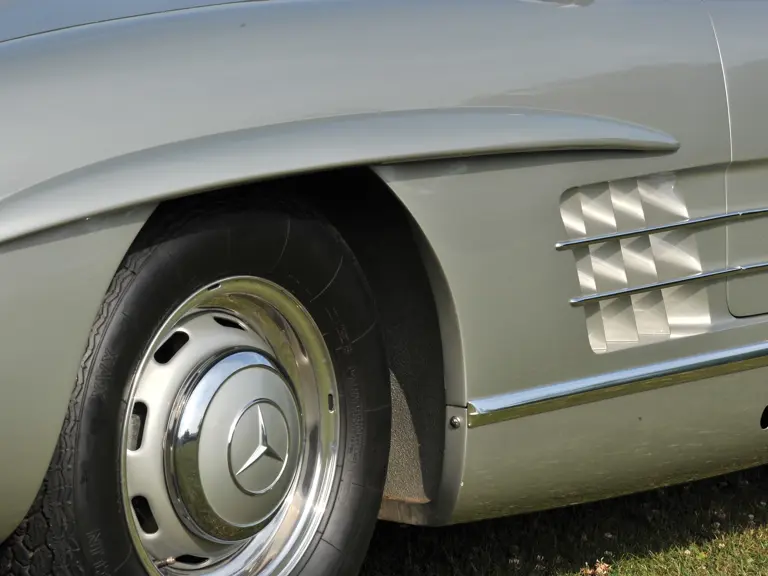
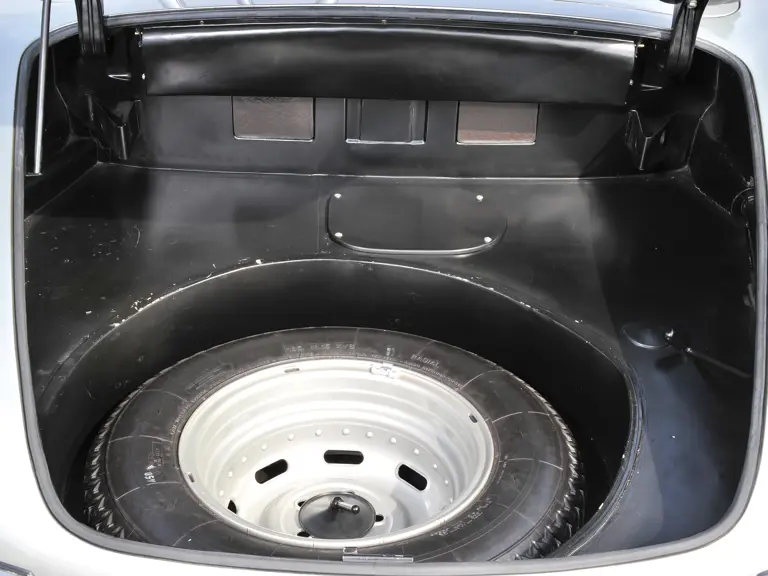
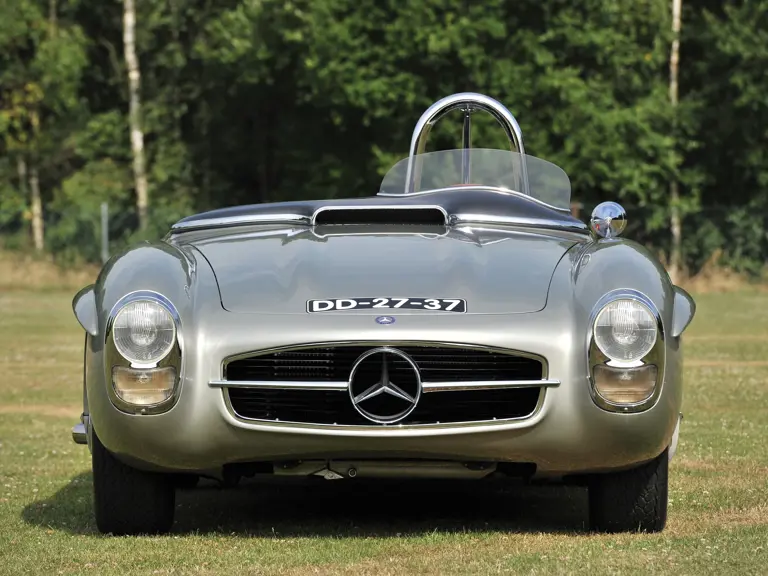
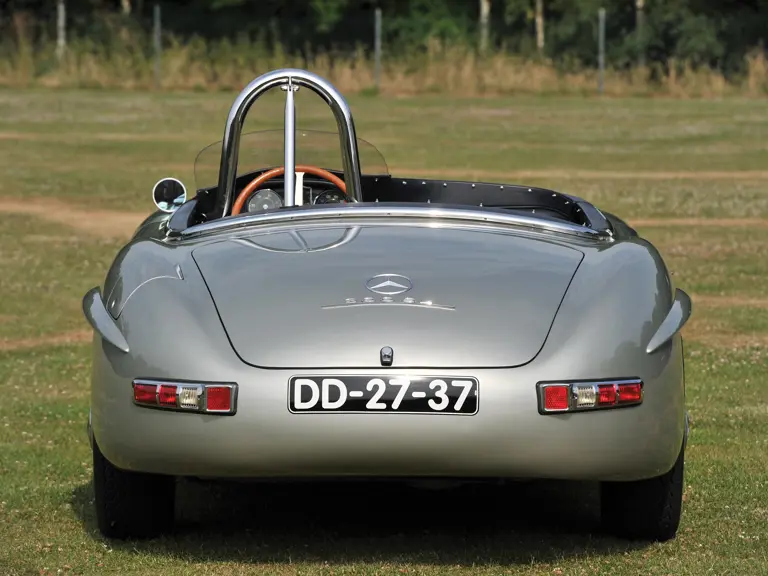

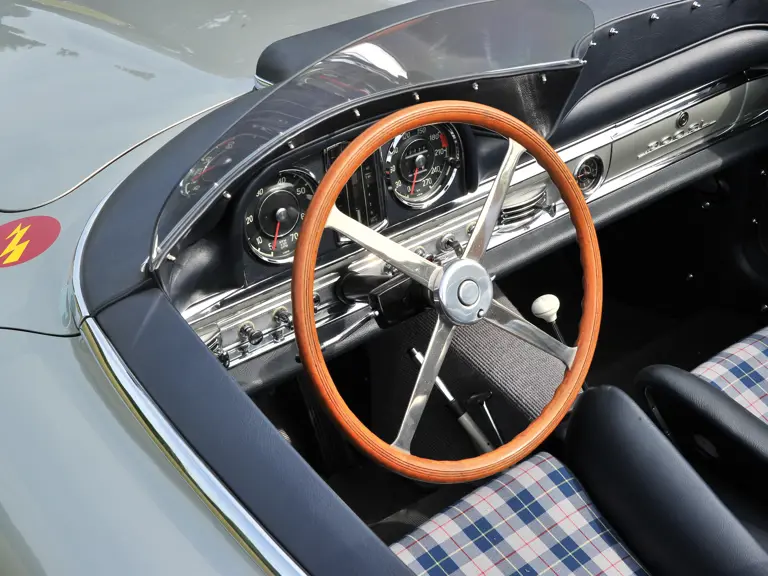
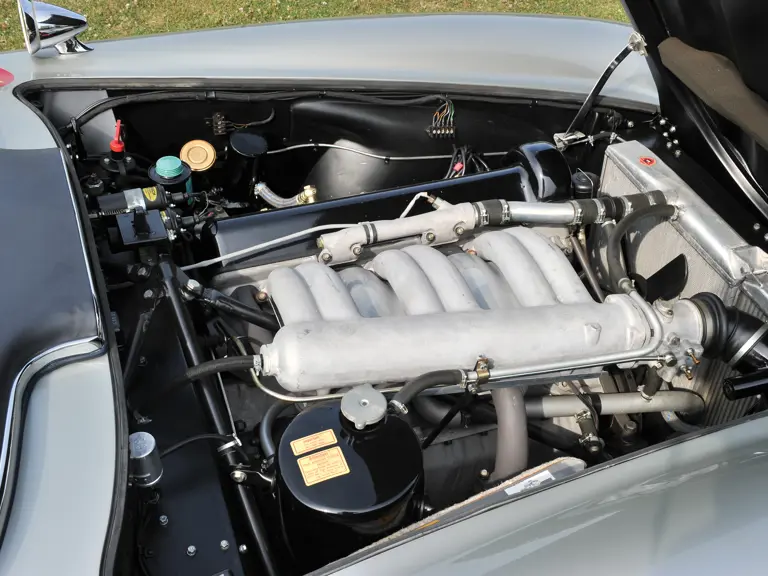


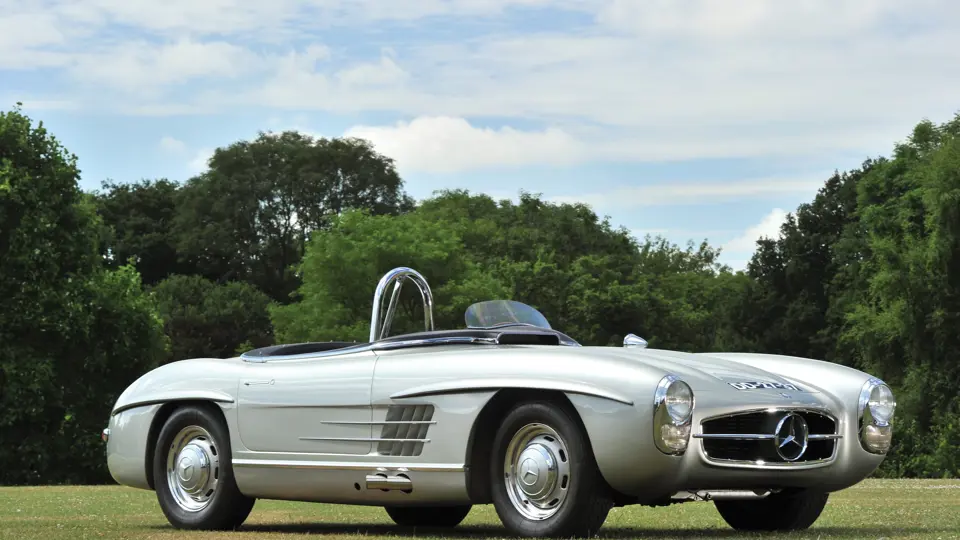
 | London, United Kingdom
| London, United Kingdom

